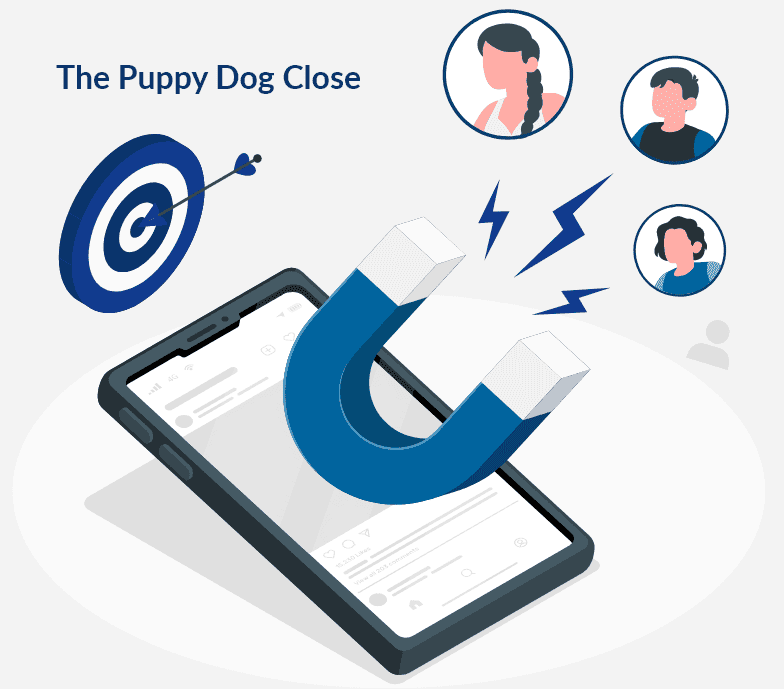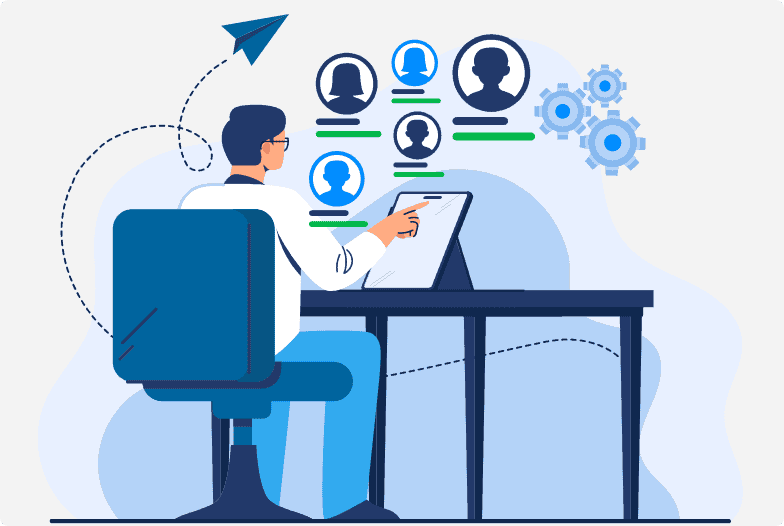
Every salesperson would agree that closing a sale is a “tough nut to crack,” as it requires significant time and effort to understand the customer’s needs, handle objections, negotiate effectively, and finally ask for the sale.
However, how many of them actually make it to the end? Most salespeople lose interest in the middle of the process, while others are too eager to close a deal in advance, which can result in poor customer satisfaction.
Nearly 30% of sales reps feel that closing a sale is the most challenging part of their job. This is because closing sales is an art, and relying on conventional strategy can increase the risk of losing your potential targets. Just as artistic style changes over time, so do your closing tactics.
Therefore, this guide covers 10 advanced sales closing techniques for overcoming the challenges that enable you to ensure the success of your sales team. Before we get into the nitty-gritty of these tips and techniques, let’s understand what exactly sales closing is.
Sales closing is a strategic approach used to turn your prospects into customers. You successfully close a deal when the lead is ready to purchase at a mutually agreed price.
There are steps to securing deals effectively. First, you need to trigger interest, emphasize the benefits, offer a reliable solution as a deal, and finally ask for a close. But this is more challenging than it sounds.
Because the strategy that works for one prospect may not work for another. Therefore, we outline 10 closing techniques to help salespeople streamline their process.
So, let’s get started!
The soft closing technique involves subtly guiding your prospects towards a purchasing decision, by pointing out the beneficial features of your products and services without pressurizing them to close a deal.
The salesperson can use this strategy when your customer hesitates to finalize a deal or feels pressurized, especially if you try to use a more straightforward method.
This technique involves using reassuring language that highlights the benefits of your products and services.
For instance,
Here’s how soft closing technique works:
This technique involves asking a series of questions to your customers. These questions are built in such a way that drives your prospects to make purchasing decisions.
Most of the salespeople fail to ask questions to close sales. Knowing the perfect timing and situation, when to ask, “Are you ready to make purchase?” can help you crack your deal faster.
When is the perfect time to ask closing questions? If you manage to qualify your prospects, present your solution, and feel they’re a good match for your products. Then simply ask for a sale!
Here’s the series of questions you can ask your customers to seal the deal:
The visual close technique involves using visually appealing props, such as graphs, charts, demos, and much more. It is particularly popular among Gen Z decision makers.
This strategic approach allows you to elucidate the best features and impacts of your products and offerings, which in return helps your customers to imagine themselves adopting and benefiting from your services.
Leverage on visual materials that precisely demonstrate how your products and services can help prospects to overcome their challenges. Additionally, utilize before-and-after comparison, case studies, and client testimonials to pitch your sales message.
For example,
You can illustrate your client success stories by providing visual proof and charts. This can help your clients to make more informed sales decisions.
Here’s how it works:
“Take a look at this graph explaining how our equipment and machinery helped a similar A, B, & C company increase their productivity by 58%, 62%, and 83%, respectively.”

This sales technique comes from the practice of pet stores that let customers take puppy home for few days and return it if they decided not to keep it. However, will it really be that easy to give back a puppy after developing an emotional bond?
Salespeople use a similar strategy by providing free trials of their products for a limited period. This allows clients to experience the product’s beneficial features firsthand, making it more difficult for them to say no when it’s time to buy.
Here’s how puppy dog sales closing technique works:
Sales rep – “I see that you’re hesitant to decide. Would you like to try a free trial of our software and experience your team’s productivity firsthand?”
Client – “Yes, that sounds reasonable. I’d like to try your free demo.”
Sales rep – “Alright! I’ll offer you demo version of our software and contact you next week to see how it’s going.”
You can see this kind of practice in software selling, where you can try out a demo version of software before making a purchase. This enables salespeople to influence their customer’s buying decision.
This sales technique involves selling products and services by providing your customers with two different options to secure a valuable deal. This prevents your clients from sticking to just one choice and allows them to explore more alternatives.
Instead of showcasing a single product and a service, you can ask your prospects to choose between 2 or 3 options. This will drive your clients to make positive purchasing decisions.
This strategic approach is applied when the buyer expresses disagreement regarding the budget or usability of products. You can offer your products or services with two different choices that match their requirements and financial capabilities.
For example,
You present your software to a customer and explain its features, functionality, benefits, costs, and more.
However, your client suddenly feels that the subscription is too expensive to afford or has limited characteristics. In such case, you can ask your customer to choose between the two options, such as:
The Assumptive close sales technique is based on a psychological and sociological term called “self-fulfilling prophecy”—where you truly believe in something, and it becomes true.
In this technique the salesperson assumes that their products and services perfectly match the customer’s requirements. So, the next step is to start a conversation to facilitate further transactions.
For example,
You can directly ask customers with a series of questions, such as:
This technique would work best when you are confident that your products perfectly match the customer’s requirements.
This approach leaves your clients with two options: whether to trust your business or not. If your brand has a strong reputation in the market, clients are more likely to close a deal with you.
At this point, every salesperson may have invested a significant time in exploring customer’s requirements and how their services can solve specific problems.
This process just reminds customers about your product’s features, prices, services, and every other aspect that helps them in overcoming their challenges. This provides crystal-clear information to procurement teams, decision makers, and others who need to approve.
You can use summary close technique through a phone call or cold email. All you need to do is:
This approach involves addressing a client’s objections or concerns head on to overcome their skepticism and easily finalize the sale. The objection technique includes listening to your customer’s concerns, offering solutions, and then closing a deal.
The common objections that every salesperson faces are:
The best way to handle the objections is by counter offering with benefits that can impact on your customer’s purchasing decision.
For example,
Objection: “It doesn’t match within my budget.”
Response: “I understand the price seems high, but it includes free support and updates for a year.”
This kind of response will help prospects experience that your products are within their requirements and influence them to make a purchase.
The sharp angle close involves responding to your client’s request in return for closing a sale. This technique is also called as – ‘If I do, will you buy?’ approach.
This technique is used on prospects who are almost ready to buy your products, but under certain conditions, which are often apart from the deal.
For instance,
The customer requests a specific customization of a product and that is not part of the deal. You can still close a sale by asking for something else in exchange.
You can say that you’ll offer this request only if the client agrees to sign a deal today. This method can be a win-win situation for both prospects and sales professionals, as clients get their customized product, and salespeople are able to achieve their weekly or monthly target.
Here’s how sharp angle close works:
Customer – “Can you provide an additional 3-day validity for the cloud storage subscription?”
Sales Rep – “Yes, I can offer you the extra validity on the subscription. If I do, will you finalize the contract today?”
It is one of the most effective techniques, every salesperson opts for closing a sale in a short cycle. This is also known as the “Now or Never” strategy, which creates a sense of FOMO – “Fear of Missing Out” – among customers.
It involves adding triggering phrases in a conversation, providing your target prospects with a good reason to secure a deal.
For example, you can utilize provoking words, such as:
However, if you don’t wish to offer discounts or special add-ons, you can still create an urgency by highlighting the consequences of your customers’ inaction. You can present the features and benefits of your products and services as something they have been missing out on for a long time.
Now that you’ve explored the 10 different closing techniques, it’s time to brush up on your pre-closing strategy.

The first and foremost step before closing a deal is to ensure that you are engaging with the right individual. Because reaching an audience who is irrelevant to your business can result in wasting time and resources. This can be overwhelming for your team as well.
Therefore, it is important to know who you’re trying to connect with, so that you can effectively present your products and services.
For example, if you want to sell an IT solution to a large company, who will you try reach out:
The right person here is to contact the chief technology officer (CTO). Because they are responsible for making organization’s IT strategies and decisions on technological investments.
Thus, it is important to note that engaging with the right decision makers or prospects is the first crucial step in closing profitable deals.
Here’s how you can reach your targeted decision makers
Find out key players of your industry and start creating a list. You can use social media or professional networking platforms, online directories, industry associations, or more.
Alternatively, you can partner with genuine data service providers, such as DataCaptive to get verified, accurate, and 100% opt-in contact lists of CEOs, CFOs, CTOs, and other decision makers.
After finding your target audience or prospects, the next step is to qualify them. This will help you determine whether they fit your ideal customer profile or have genuine interest in buying your products.
In your sales conversation, ensure you ask qualifying questions, such as:
The next step is to start consultative selling, where you put your relationship first with your customer. In this technique, you act as a consultant, based on the data you gain from the qualifying questions, you can influence the customer’s decision making process.
Instead of directly diving into selling your products, you can dig deeper into addressing pain points and solving their problems. You can ask a series of questions to get clarity about their choices and preferences.
This will help you to identify their real intentions and offer ultimate solutions that align with their objectives, rather than simply trying to fit them into your products, even if they are not relevant to them.
Consultative sales add advantage to your business in many ways, such as:
A good salesperson knows their product above and beyond. Great salespeople know how their product solves customer’s pain points. Therefore, it is important for sales reps to create pitch templates that match their customer’s needs rather than the products.
Your clients only care about the results that your products deliver while solving their pain points and challenges. Thus, it is important to note when you’re selling your products based on features, you’re presenting it as a solution (not as sales opportunity).
Here’s an example of presenting products as a solution vs sales pitch
As a Solution – “Our software offers 1000+ features that help you in improving your operations, such as so and so. Let me explain how each of them works.”
As a Sales Pitch – “Our software offers 1000+ features built to enhance your operations. Which one of the features is relevant for you? What are you looking for?”
Selling solutions over products can help you gain your customer’s trust. It shows that you genuinely care about their problems and are committed to solving them.
It is the most crucial step which make-or-break your sales closing. Most of the salespeople fail in this technique, as they are worried about getting rejected by the customers. However, following up takes significant time and effort for sales reps.
On average, it takes eight touch points for every salesperson to close a deal. Regular follow ups add unique value to these touch points. Rather than just checking in with prospects, it helps them to track progress and take the conversation towards purchase.
For example, instead of saying, “Hey, are you ready to make purchase?” in call or email. You can provide clients with:
How do you avoid sales closing mistakes? By asking for a sale at the right time, following up your prospects regularly, handling customers objections with relevant response, actively listening to them can help you improve at closing your sales.
Furthermore, leveraging advanced technologies or software in your sales process might help you win profitable deals.
CRM stands for ‘customer relationship management’ a software that centralizes in managing customers data and touch points, while minimizing human error.
This provides sales reps a 360-degree view of their customers to personalize their sales pitch. Some of the major CRM software includes Zoho CRM, Salesforce, HubSpot, and more.
Chatbots are conversational AI that helps sales managers and employees in engaging with target customers on their preferred channels. This AI bot helps salespeople to qualify leads, secure profitable deals, and build rapport amongst customers.
The popular AI chatbots used in sales are Zendesk, Tidio, Intercom, and more.
Sales engagement is a single interface platform that effectively plans, executives, tracks, and optimizes the interaction between the sales reps and the customers across the multiple channels.
They often integrate with CRM to effectively find and reach target customers, to facilitate effective sales engagement such as ensuring timely follow up, tracking customers interactions, and other related tasks.
Several best sales engagement software includes Salesloft, Zendesk sell, Zoho SalesIQ, Groove, and more.
Lead intelligence is a process of collecting and analyzing customers data (leads) for better understanding of their needs, preferences, demographics, interests, purchasing patterns, and more. This helps the sales team to prioritize their prospects for closing valuable deals.
The top data intelligence providers are DataCaptive, ZoomInfo, Clearbit, and others. Among them DataCaptive stands out in the market for delivering a high quality database and lead intelligence for building an effective sales pipeline.
DataCaptive stands out in the entire market for delivering accurate, verified, and 100% opt-in B2B contact lists. This professional B2B data service provider offers a high-quality database to companies across various industries and locations for building sales pipelines effortlessly.
By utilizing DataCaptive’s B2B contact database, you can reach the right audience who perfectly matches your ideal customer profiles (ICPs). This assists you in personalizing your marketing, attracting qualified leads to your sales funnel, boosting conversions, and achieving your sales target.
To sum it up, closing a sale can be very challenging. However, by employing the 10 effective sales closing techniques outlined above, you can not only secure deals with your customers more easily, but also build valuable connections with them for better brand visibility.
Moreover, finding the right contact list provider, such as DataCaptive, streamlines your sales cycle by targeting prospects who are genuinely interested in your offerings. This helps you to generate sales and bring significant revenue and ROI to your company.
Get a Sample Email List
Show some love!

Subscribe to Newsletter
Stay up-to-date with the latest tips & strategies. Get additional discounts & alerts on offers.
Related Articles
Subscribe to Newsletter
Stay up to date with the latest marketing, sales, and service tips and news.